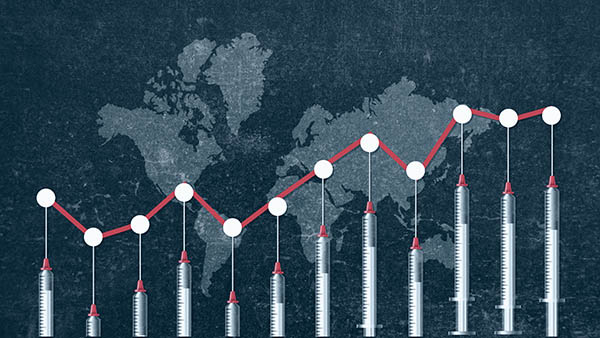Editor’s Note: The SCM thesis Incorporating Equity into Vaccine Access was authored by Matthias Schumm and Mehdi Tagorti and supervised by Dr. Jarrod Goentzel (goentzel@mit.edu) and Tim Russell (trussell@mit.edu). For more information on the research, please contact the thesis supervisors.
COVID-19 revealed an uncomfortable truth about the healthcare system in the United States: Not everyone had the same shot at a shot. Vaccine distribution was not a one-size-fits-all operation. Socioeconomic factors, geographical challenges, and lack of insurance coverage skewed the scale. Our goal? To tip that scale back toward equity, one community at a time.
Puzzle pieces and missing links
Diving deeper, we identified the drivers of the inequity behind this inequity: inaccessible transportation, gaps in health insurance coverage, and vaccine skepticism among some in the community. These factors created a barrier of disparity that the uninsured, the remote, and the socioeconomically challenged found hard to scale. It became evident that an effective solution needed more than a uniform distribution of vaccines; it called for a nuanced approach addressing the complex, interwoven issues contributing to this healthcare puzzle.
Building bridges, one step at a time
So, how did we address this vast challenge? Using data from Cambridge, Massachusetts, we built a model to increase equitable vaccine access and the results were encouraging. Our solution was twofold, tackling immediate barriers while setting the stage for long-term improvements. First, we adjusted the distribution of medical facilities administering vaccines. We ensured these were placed based on population needs, not just equally spread geographically. This strategic move boosted vaccine accessibility in the short run, particularly in marginalized communities.
For the long haul, we propose to focus on the uninsured. We strategized that improving health insurance coverage ensures it would not be a barrier to vaccination. We also amped up transportation options to make access easier for those in remote areas.
By adjusting the density of medical facilities to meet population needs, we identified ways to increase equitable access. This more tailored approach opened opportunities to address specific needs and challenges, moving the needle significantly toward equity.
Our efforts not only measure but also actively enhance vaccine equity. We created a tool that enables decision-makers to address barriers to vaccine access in their regions. It is a roadmap to predict vaccination attainment at the census tract level, ensuring no community is overlooked.
In the fight against COVID-19 and any future pandemic, we must ensure that access to a life-saving vaccine is a universal right, not a privilege. Equity in vaccine distribution is the goalpost we are aiming for.
Supply Chain Management Review
Every year, approximately 80 students in the MIT Center for Transportation & Logistics’s (MIT CTL) Master of Supply Chain Management (SCM) program complete approximately 45 one-year research projects.
These students are early-career business professionals from multiple countries, with two to 10 years of experience in the industry. Most of the research projects are chosen, sponsored by, and carried out in collaboration with multinational corporations. Joint teams that include MIT SCM students and MIT CTL faculty work on real-world problems. In this series, they summarize a selection of the latest SCM research.

